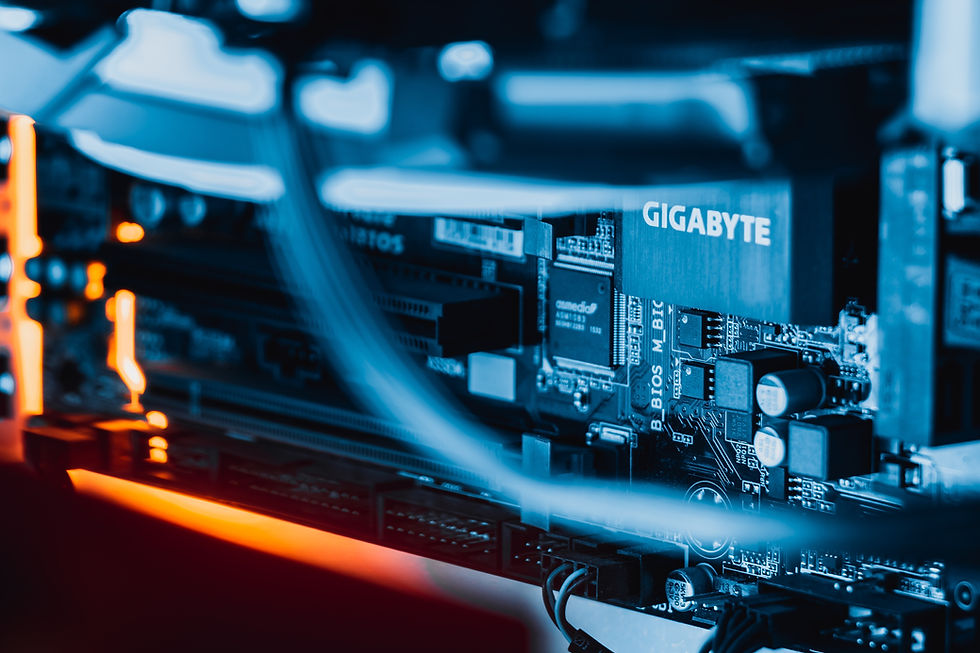Emerging Trends in Cybersecurity: What to Watch Out For
- akolodny
- Jul 19, 2023
- 3 min read

As technology continues to evolve at a rapid pace, so do the tactics and techniques used by cybercriminals. Staying ahead of emerging trends in cybersecurity is crucial for organizations to effectively protect their digital assets and sensitive information. This article highlights some of the key emerging trends in cybersecurity that individuals and businesses should watch out for.
Artificial Intelligence (AI) and Machine Learning (ML) in Cyberattacks
Artificial intelligence and machine learning are being increasingly utilized by cybercriminals to launch sophisticated attacks. AI-powered malware can adapt and evolve, making it more difficult for traditional security systems to detect and mitigate threats. Similarly, ML algorithms are used to identify vulnerabilities in networks and exploit them. As AI and ML continue to advance, organizations need to enhance their cybersecurity defences with advanced threat detection systems that leverage AI and ML themselves.
Internet of Things (IoT) Vulnerabilities
The proliferation of IoT devices introduces new security risks. IoT devices often have weak security controls and are vulnerable to exploitation. Cybercriminals can target and compromise these devices to gain unauthorized access to networks or launch large-scale distributed denial-of-service (DDoS) attacks. Organizations must implement robust security measures for their IoT devices, including strong authentication, encryption, and regular firmware updates.
Cloud Security Challenges
Cloud computing offers numerous benefits, but it also presents unique security challenges. Misconfigurations, inadequate access controls, and data breaches are among the top concerns in cloud security. As more businesses adopt cloud services, it is crucial to prioritize proper cloud security practices, such as encryption, multi-factor authentication, and continuous monitoring. Regular security audits and assessments should also be conducted to identify and address potential vulnerabilities.
Ransomware Attacks and Extortion
Ransomware attacks have become increasingly prevalent and sophisticated. Cybercriminals use ransomware to encrypt critical data and demand a ransom for its release. In recent years, there has been a rise in double extortion tactics, where attackers not only encrypt data but also threaten to expose it unless the ransom is paid. Organizations must implement strong backup strategies, network segmentation, and robust cybersecurity measures to protect against ransomware attacks.
Supply Chain Attacks
Supply chain attacks involve targeting a company's vendors or partners to gain unauthorized access to their networks, with the ultimate goal of infiltrating the target organization. These attacks can have widespread implications, affecting multiple organizations simultaneously. Organizations need to assess the security practices of their vendors and partners, implement strong access controls, and conduct regular security assessments to mitigate the risk of supply chain attacks.
Biometric Authentication Vulnerabilities
Biometric authentication, such as fingerprint or facial recognition, is gaining popularity for secure access. However, biometric data can be vulnerable to theft or spoofing. As biometric authentication becomes more prevalent, organizations must implement robust security measures to protect biometric data, such as strong encryption and secure storage. Multimodal biometrics, combining multiple biometric factors, can enhance security and minimize the risk of compromise.
Quantum Computing Threats
Quantum computing has the potential to revolutionize various industries, but it also poses a significant threat to traditional encryption algorithms. Quantum computers can break commonly used encryption methods, potentially rendering sensitive data vulnerable. To prepare for this emerging threat, organizations should explore post-quantum encryption methods and plan for a transition to quantum-resistant cryptographic algorithms.
Mobile Device Security Risks
With the increasing reliance on mobile devices for work and personal use, mobile security risks are on the rise. Malicious mobile apps, insecure Wi-Fi networks, and mobile phishing attacks pose significant threats. It is crucial to educate users about mobile security best practices, implement mobile device management solutions, and enforce strong security policies to protect against mobile-based cyber threats.
Staying informed about emerging trends in cybersecurity is vital for individuals and organizations to stay ahead of cybercriminals. The rapid advancement of technology brings both opportunities and risks. By being aware of the evolving landscape, organizations can adapt their cybersecurity strategies and invest in the necessary measures to mitigate potential threats. Proactive measures, such as leveraging AI and ML for threat detection, securing IoT devices, ensuring robust cloud security, protecting against ransomware and supply chain attacks, strengthening biometric authentication, preparing for quantum computing, and implementing mobile device security practices, will help bolster defences and safeguard sensitive information. By remaining vigilant and proactive, individuals and organizations can effectively navigate the ever-changing cybersecurity landscape and protect themselves against emerging threats.








Comments